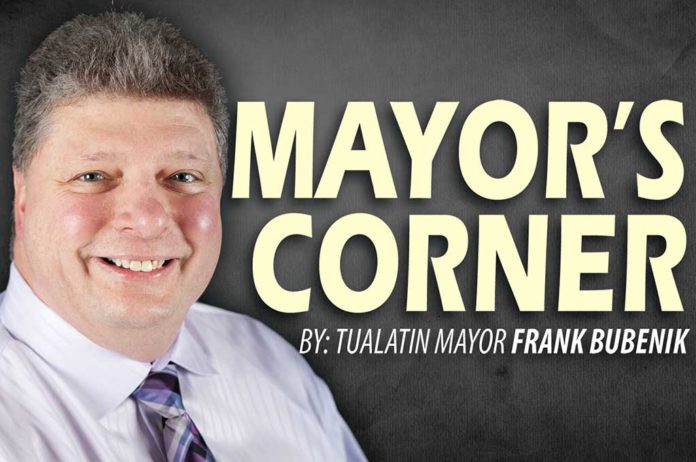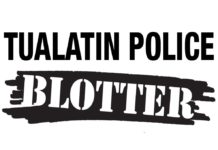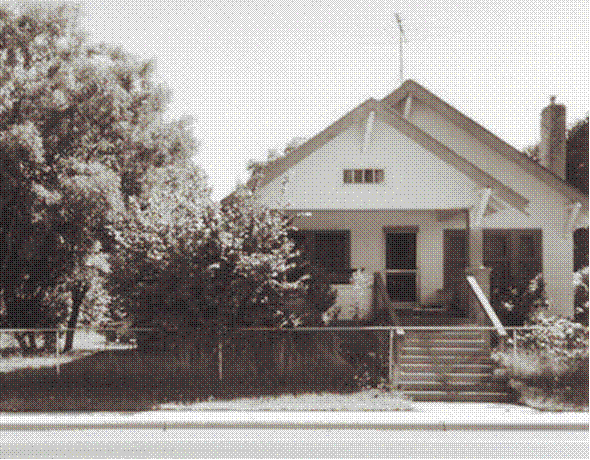ODOT Tolling Plan – Part 2
Last month I reviewed the I-205 toll project and this month I will review the Regional Mobility Pricing Project (RMPP) as well as summarize the city’s response to ODOT’s Environmental Analysis of the impacts caused by I-205 tolling.
ODOT’s Regional Mobility Pricing Project proposes to reduce congestion on I-5 and I-205 in the Portland metropolitan area through congestion pricing. Congestion pricing, using variable-rate tolls, is a key tool in ODOT’s strategy to reduce traffic jams and provide safer and more predictable trips for travelers. ODOT would like to roll out the RMPP a year after the implementation of the I-205 tolling, which is scheduled for 4th quarter of 2024.
The RMPP proposes to:
- Toll on all lanes of I-5 and I-205 in the Portland, Oregon metropolitan area. ODOT claims tolling all lanes will provide congestion relief and keep costs low for all drivers. Tolls are being studied on I-5 between the Columbia River and the Boone Bridge in Wilsonville and on I-205 from the Columbia River to where I-205 intersects with I-5 in Tualatin.
- Base toll rate on a set schedule. Drivers would know the toll rate in advance. A set schedule allows drivers to determine the cost of their trip ahead of time to plan their travel.
- Base toll rates on location and time of day. Toll rates would vary based on time of day and location, known as variable rate tolls. Drivers would be charged higher toll rates at congested locations during morning and afternoon rush hours and lower tolls at less congested locations during other times of day. Drivers would only pay for the portions of I-5 and I-205 they use.
- Collect the toll through an all-electronic collection system—drivers would not stop to pay a toll.
- Monitor and adjust toll rates after tolling begins. The Oregon Transportation Commission will set toll rates.
ODOT states that tolling is a necessary tool to fix our transportation system. They believe congestion tolling will bring more predictable trips on I-5/I-205 and address congestion in the Portland, Oregon metropolitan area, resulting in reduced greenhouse gas emissions. Toll revenue from the RMPP would be an additional source of funding for transportation improvements.
City of Tualatin’s Response to ODOT I-205 Tolling Analysis
On April 21, 2023 the city sent its response to ODOT on their Environmental Analysis (EA) of the potential impacts of tolling on I-205 between the Tualatin River bridges and the Abernathy Bridge. The EA consists of thousands of pages of documents that city council and staff reviewed and analyzed. We worked collaboratively with Clackamas County as well as West Linn and Lake Oswego when crafting our letter. The following is a brief listing of our concerns:
- Diversion resulting from the I-205 toll project will significantly impact the safety, livability, and economic vitality of our community. The EA analysis showed significant amounts of traffic currently on I-205 would instead use local roads, particularly on SW Borland Road, to get around the tolls, resulting in significant impacts to our city and the communities around us.
- The increase in traffic will cause delays to emergency vehicles attempting to access local hospitals. Tolling would cause significant diversion of traffic along 65th Avenue and Borland Road, and through this already-congested intersection, impeding emergency vehicles traveling to and from Legacy Meridian Park Hospital.
- Diverting traffic will make our local streets less walkable and less bike friendly, two transit modes that ODOT has suggested will help mitigate diversion. As the diverted traffic makes our streets scarier and increases actual crash rates, fewer people will choose to walk or bike in this area, and many will choose to drive instead, shifting more mode-share to motor vehicles, thus another significant impact and effect of tolling that is contrary to the purpose and need of the project.
- Tualatin has very few public transit routes that offer a viable alternative to driving, and there is no existing TriMet route parallel to the I-205 corridor.
- Many community members rely on services along Borland Road like the Borland Free Clinic and the Tualatin Food Pantry. These locations will become much harder to reach when drivers begin using Borland Road significantly more as a diversion route.
- The economy in Tualatin will suffer from the I-205 toll project. The cost of tolls for businesses that depend on freight movement and shipping will ultimately be passed down to consumers. Additionally, many employees may choose to stop commuting to their jobs in Tualatin due to freeway tolls and/or local traffic caused by diversion. This will ultimately put even more strain on an already delicate labor market.
- ODOT’s proposed traffic mitigation measures in the EA will not sufficiently address the level of traffic and safety concerns that will occur as a result of the I-205 toll project.
- Tolling was the only option considered in the analysis. Other options, such as funding the I-205 project by other means (either existing or increased funding sources such as gas tax, vehicle-mile tax, vehicle registration fee, etc., or new funding sources), or tolling only the new third lane were not considered.
For the reasons listed above the Tualatin City council does not support ODOT’s current I-205 tolling plan. We are delighted that the governor and legislature heard our concerns and will delay implementing tolling for two years until our concerns and the concerns of other impacted communities are addressed. City council will continue to advocate for changes to the tolling plan in various regional transportation committees as well as with our state elected officials.



















